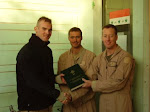When Pope Francis uses the term “living tradition” he in fact means actually departing from tradition while “creatively” trying to maintain an appearance of adhering to it.
Francis’s “Creative Fidelity to Tradition” and the Complete Impotence of the Vatican II Religion
By: Robert Morrison | Remnant Columnist
“For you know, venerable brothers, that these bitter enemies of the Christian name, are carried wretchedly along by some blind momentum of their mad impiety; they go so far in their rash imagining as to teach without blushing, openly and publicly, daring and unheard-of doctrines, thereby uttering blasphemies against God. They teach that the most holy mysteries of our religion are fictions of human invention, and that the teaching of the Catholic Church is opposed to the good and the prerogatives of human society.” (Blessed Pope Pius IX, Qui Pluribus)
In his May 10, 2024 address to members of the International Network for Societies for Catholic Theology (INSeCT), Francis discussed three guidelines for his theology:
"I would like to point to three guidelines for theology: creative fidelity to tradition, a cross-disciplinary approach and collegiality. These are the essential ‘ingredients’ of the vocation of Catholic theologians in the heart of the Church.”
What did Francis mean by “creative fidelity to tradition”? In his description of each of the three guidelines, he replaced the “creative fidelity to tradition” phrase with the concept that “tradition is living”:
“As we all know, Tradition is living. Consequently, it must increase and incarnate the Gospel in every land and in all cultures.”
Many Traditional Catholics have heard this concept before — usually expressed as “living tradition” — and may even know about its pre-Vatican II theological origins. In equating “living tradition” with “creative fidelity to tradition,” though, Francis effectively admitted what the proponents of the Vatican II revolution have denied since the Council: he made it evident that when the innovators use the term “living tradition” they mean that they are actually departing from tradition while “creatively” trying to maintain an appearance of adhering to it.
John Paul II’s Ecclesia Dei provided a concrete example of how the innovators actually implement their “creative fidelity to tradition”.
In this light, we can better interpret the most contentious use of the concept of “living tradition,” which John Paul II included in his 1988 apostolic letter, Ecclesia Dei, relating to the “excommunication” of Archbishop Marcel Lefebvre for his consecration of four bishops without approval from Rome:
“The root of this schismatic act can be discerned in an incomplete and contradictory notion of Tradition. Incomplete, because it does not take sufficiently into account the living character of Tradition, which, as the Second Vatican Council clearly taught, ‘comes from the apostles and progresses in the Church with the help of the Holy Spirit. There is a growth in insight into the realities and words that are being passed on. This comes about in various ways. It comes through the contemplation and study of believers who ponder these things in their hearts. It comes from the intimate sense of spiritual realities which they experience. And it comes from the preaching of those who have received, along with their right of succession in the episcopate, the sure charism of truth.’”
From the perspective of Archbishop Lefebvre, John Paul II was using “living character of tradition” in the same way that Francis spoke of “creative fidelity to tradition.” If John Paul II had used the latter phrase, though, he would have lost all credibility with many who ultimately agreed with him.











No comments:
Post a Comment